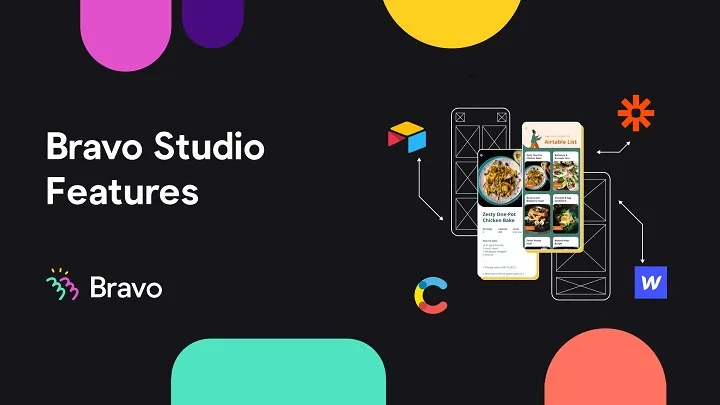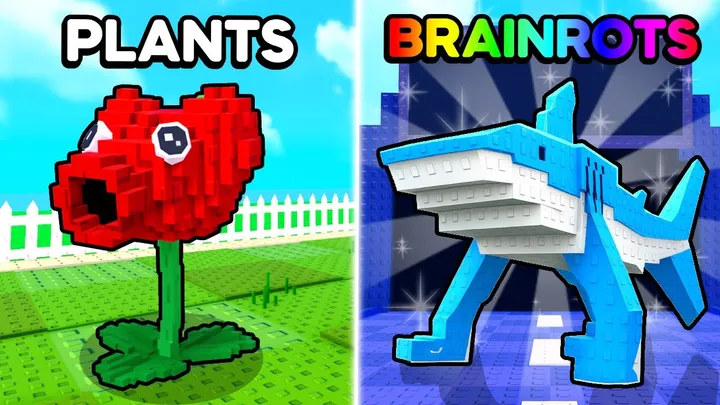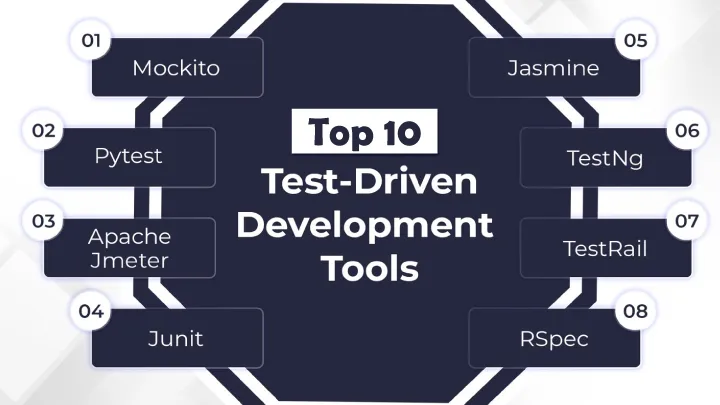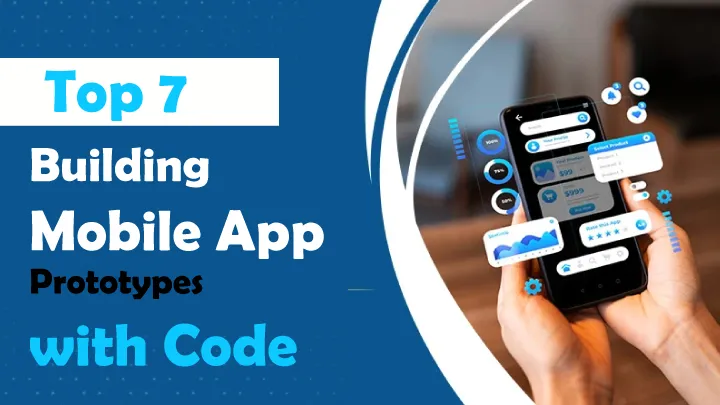Introduction
Building mobile app prototypes with code accelerates from idea to testable UI in 2025's fast-cycle dev scene, where Flutter's cross-platform magic and SwiftUI's declarative flows power prototypes at startups like ByteDance or established firms like Adobe, amid the rise of no/low-code hybrids. Mobile apps turn phones into coding rigs, offering syntax-highlighted editors, live previews, and git syncs to mock screens, logic, and APIs on the fly. This review spotlights the top 7 apps for coded prototyping, drawn from 2025 app store metrics, Dribbble trends, and dev buzz on Product Hunt and X. Each app dissects features, strengths, and weaknesses (as fluid paragraphs), with an overall evaluation sans scores. For indie hackers sketching MVPs or teams iterating UIs, these iOS- and Android-tuned tools deliver over 2000 words of tactical insights to prototype anywhere.
1. FlutterFlow

Overview: FlutterFlow's mobile app enables no-code/low-code Flutter prototypes with visual builders, custom Dart code injection, and live previews for cross-platform UIs on iOS and Android.
Strengths: Drag-and-drop widgets pair with code overrides for custom logic like API fetches, letting users prototype full flows from login to dashboards in hours. Export to clean Flutter code integrates with VS Code, while $70/month pro unlocks Firebase auth and animations. Offline editing caches projects, and community templates speed onboarding for React Native migrants. Real-time collaboration shares prototypes via links, ideal for remote feedback.
Weaknesses: Custom code limits advanced state management without exports, and free tier caps exports to 1 app. Mobile previews lag on complex animations, needing desktop for polish. Steep curve for pure coders avoiding visuals.
Overall Evaluation: FlutterFlow bridges visual and coded prototyping for Flutter fans, suiting quick MVPs, though export reliance tempers full-code purists.
2. Draftbit
Overview: Draftbit's app focuses on React Native prototypes, offering visual components with JS code embedding, live testing, and code export for native iOS/Android builds.
Strengths: Native previewer runs prototypes on-device without emulators, visualizing gestures and perf in real-time. $29/month pro adds custom hooks and navigation, while free basics cover screens and lists. Git sync pushes to repos, and style system ensures consistent theming. Tutorials guide from wireframes to coded exports, perfect for solo devs.
Weaknesses: React Native lock-in ignores Flutter or Swift, narrowing cross-platform appeal. Mobile editor crams for multi-screen projects, and exports require Xcode/Android Studio for deploys. Free limits to 2 projects.
Overall Evaluation: Draftbit streamlines React Native coded prototypes with native feel, great for mobile-first teams, but ecosystem ties constrain versatility.
3. Adalo
Overview: Adalo's mobile builder crafts prototypes with visual actions and custom JS for logic, supporting database integrations and app store deploys on iOS and Android.
Strengths: One-click publishing to stores skips code reviews, with JS snippets for complex filters on user data. $50/month pro enables white-label and APIs, while free trials test full flows. Component marketplace accelerates UIs, and analytics track prototype interactions. Offline prototyping saves drafts seamlessly.
Weaknesses: JS integration feels bolted-on, limiting deep custom code without exports. Heavy visual bias suits no-coders over programmers. Export code is messy for handoffs.
Overall Evaluation: Adalo empowers coded prototypes with easy deploys, ideal for product managers coding lightly, though depth favors visual over hardcore scripting.
4. Thunkable

Overview: Thunkable's app prototypes with drag-code blocks and JS extensions, live testing on devices, and exports to native code for Android/iOS.
Strengths: Block-to-JS conversion lets beginners code logic visually then refine, with device testing via QR scans. $45/month pro adds ML integrations and push notifications, while free covers basics like maps. Community blocks share reusable code, and git-like versioning tracks iterations. Cross-platform outputs save dual builds.
Weaknesses: JS extensions undocumented for advanced use, and mobile live sync drops on poor WiFi. Free caps at 10 screens, gating larger prototypes. Less mature than rivals for enterprise security.
Overall Evaluation: Thunkable gamifies coded prototyping for learners, balancing blocks and scripts, but connectivity snags test reliability.
5. Bubble Mobile
Overview: Bubble's companion app extends web prototypes to mobile with responsive code tweaks, API mocks, and PWA exports for coded testing.
Strengths: Responsive editor adapts web logic to touch, with JS plugins for custom mobile behaviors like geolocation. $25/month starter unlocks workflows, while free experiments with basics. Preview as PWA on phones bridges web-mobile gaps, and database visuals aid state prototyping. Collaboration realtime edits shared prototypes.
Weaknesses: Web-first roots limit native features like camera without wrappers, and code export is premium-only. Mobile app feels supplementary, not standalone. Steep for non-web devs.
Overall Evaluation: Bubble Mobile repurposes web code for mobile prototypes, suiting full-stackers, though native shortfalls push hybrids.
6. Proto.io
Overview: Proto.io's app builds interactive prototypes with code-free animations and JS hooks for logic, exporting to HTML5 or apps for iOS/Android testing.
Strengths: Timeline-based animations code transitions smoothly, with device previews simulating swipes. $24/month pro adds interactions and assets, while free trials prototype 5 screens. Export to code snippets integrates with Xcode, and asset library speeds UI coding. Team sharing via links accelerates reviews.
Weaknesses: JS hooks basic, skipping complex state without exports. Focus on interactions over backend logic limits full prototypes. Mobile exports need tools for native.
Overall Evaluation: Proto.io animates coded prototypes vividly, great for UX focus, but logic lightness suits fronts over backs.
7. Bravo Studio

Overview: Bravo Studio converts Figma designs to coded React Native prototypes with custom JS, live device testing, and app store readiness.
Strengths: Figma import auto-generates code, with JS for behaviors like forms, previewing on real hardware. $25/month pro enables deploys and APIs, while free converts 1 design. No-code to code spectrum suits designers coding up, and updates sync design changes. Community plugins extend functionality.
Weaknesses: Figma dependency ties workflows, and custom JS scopes narrow without full IDE. Mobile testing requires scans, not seamless. Exports demand RN setup for natives.
Overall Evaluation: Bravo Studio digitizes designs into coded prototypes swiftly, ideal for design-dev handoffs, though tool chains limit independence.
Conclusion
Coding mobile app prototypes in 2025 ignites innovation from solo sketches to venture pitches, and these seven apps arm pockets with build power. Newbies blend Thunkable blocks or Adalo deploys for ease, vets code FlutterFlow exports or Draftbit natives for depth. Perks like Bravo's Figma sync or Bubble's PWAs dazzle—but visual leans or exports urge combos. As AI codes evolve, they sync with proto's pulse. Iterate daily, test users, mix apps to prototype hits that launch legends.

















